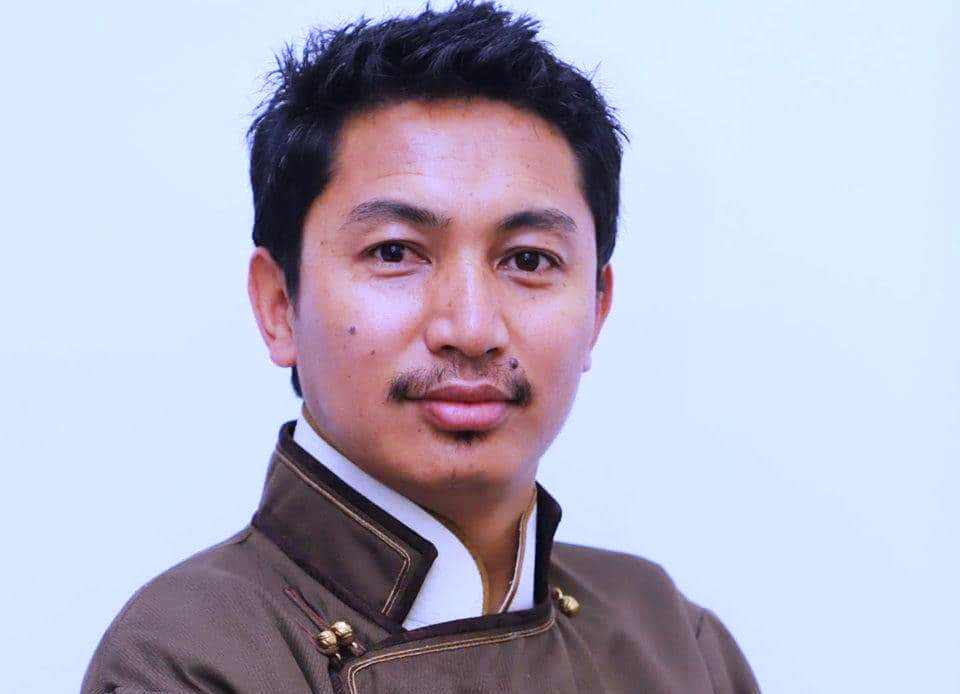With social media emerging as the alternative universe, part of politics, campaigning and vote-seeking is also taking place in the virtual world. Syed Shadab Ali Gillani reports the formal entry of political parties from Jammu and Kashmir into social media at a time when Lok Sabha polls are taking place

A seismic shift is in progress in the fast-changing political communication set-up. Reporters navigating labyrinthine corridors to get a politician’s quote is past. It is the social media. Now the political narrative unfolds in real-time, with tweets and posts serving as the modern press release.
Demonstrating the considerable influence of social media in politics, on the morning of May 2, the Jammu and Kashmir National Conference (JKNC) VP, and also the Lok Sabha candidate from the Baramulla constituency, Omar Abdullah submitted his nomination papers. His public relations team quickly shared videos and photos on their social media platforms, ensuring widespread coverage across all media outlets. In quick follow-up, formal media raced to share the news, amplifying the party’s reach and reducing the necessity to engage with journalists or news gatherers for event coverage.
This trend is being embraced by almost every political party to garner media attention and expand their outreach. This transformation has not only streamlined the news-gathering process but has also democratised access to information, particularly for the digitally savvy youth. This helps the political discourse play out on the screens of smartphones and laptops, where politicians wield tweets as effectively as they once wielded speeches.
This, however, gives them an advantage they were desperate for ages: not to answer a question. Off late, they are seen as desperate to social media influencers who have a better engagement.
Everybody’s Platform
Almost all political parties including the People’s Democratic Party (PDP), JKNC, People’s Conference, and Bharatiya Janata Party (BJP) have established social media teams. While real-world interactions are all about travel and speeches, virtual-world engagement involves feeding people with data, and personal letters to sway their opinion, and showcase their achievements with unprecedented immediacy.
Parties apart, the candidates in the fray have embraced social media platforms as essential tools for communication. With a few taps and swipes, they broadcast their slogans and messages directly to their constituents, bypassing traditional media filters. One candidate talks to the real and the virtual world almost at the same time using a cameraman with a smartphone and good connectivity.
Following the reading down of Article 370, this is the first major election process in Jammu and Kashmir and Ladakh, and all political parties are competing. A general expectation is that the election will have better participation and one key factor is that the boycott lobby is neither visible nor vocal.
Oldest Party
The JKNC, the oldest player in the region’s politics, boasts a sizable social media team dedicated to managing the party’s online presence. It facilitates a more effective connection between the party and the populace of Jammu and Kashmir, according to the party’s media managers.
Imran Nabi Dar, the party spokesperson, highlighted the party’s longstanding presence on social media spanning over the past 10-15 years, actively leveraging its potential. “We have cultivated a robust social media team with a presence extending to every district and constituency,” Dar remarked. “Each constituency has its designated manager overseeing social media operations.”

Omar, personally is Jammu and Kashmir’s No 1, Twitterati, boasting over three million followers on Twitter (now X). “He actively manages his Twitter account, personally curating and sharing content,” Imran said.
While the party employs a mix of traditional and modern campaign methods, Imran underscored the potency of social media as a pivotal tool with extensive outreach. “In today’s era, social media is not solely the domain of the younger generation; it has transcended age barriers, capturing a wide audience,” he observed.
Emphasising the comprehensive approach, Imran elaborated on his party’s utilisation of various online platforms for engagement. “We use all platforms including Twitter, Instagram, Facebook, and YouTube. Besides, we maintain some dedicated WhatsApp groups to disseminate party updates. Individual party members leverage their accounts for campaign endeavours.”
The Other Party
PDP spokesman, Mohit Bhan emphasised the pivotal role of social media in the electoral process, particularly in the context of the 2024 elections. He insisted that social media has become an indispensable tool in attracting a significant portion of the population.
“We are focused on maximising engagement, targeting various demographics both online and offline,” Mohit continued. He stressed the importance of a balanced approach, acknowledging the enduring significance of traditional campaigning methods. “While social media plays a crucial role, we recognise the enduring value of traditional campaign methods such as door-to-door canvassing, district-level rallies, and road shows. These avenues offer voters a personal connection and insight into the candidates and their platforms. We remain committed to a multifaceted campaign strategy, blending the strengths of both traditional and digital outreach.”
Bhan said that people are relying hugely on social media platforms for one or the other reason and it is expanding the user base of the key platforms. Her party president, Mehbooba Mufti is also using Twitter and has a following of nearly four lakh people.
“Content dissemination is strategically managed through our dedicated social media team. Content creation primarily originates from the central team, with specialised teams tracking candidates and generating relevant content,” Bhan said. “This content is then distributed to constituency leaders and individuals affiliated with our social media teams. Platforms like WhatsApp groups facilitate seamless dissemination across various sectors.”
Long Term Shifts
This shift has long-term implications for the future of political discourse. As social media becomes the primary battleground for hearts and minds, the power dynamics of democracy are being reshaped.
As additional parties jump on the bandwagon of this adoption, the competition for votes is poised to become even more intriguing with each new addition.
Jammu and Kashmir Apni Party, a relatively new entrant in Jammu and Kashmir’s political landscape, is also harnessing the power of social media to broaden its outreach. Owais Khan, the IT manager for JKAP, notes that despite being a small team, they are effectively steering the party’s social media presence. “Though we are a fledgling party, the response from the public on our social media platforms has been remarkably positive,” he adds.
In such a new arena, influence is measured not only by policy expertise but also by meme mastery and hashtag campaigns.
“In today’s fast-paced world, traditional mediums like television often take a backseat,” Owais said. “Social media serves as a readily accessible alternative, offering real-time updates and engagement.”
Changing Rules
Navigating this brave new world of social media politics, the rules of engagement have changed. Whether it is a tweet storm from the incumbent or a viral video from the challenger, the pulse of democracy now beats in the digital realm. And as the electorate scrolls through their feeds, they hold the power to shape the political landscape with every like, share, and retweet.
“We strive to maintain an active presence across all social media platforms, recognising that each platform has its distinct audience,” Adnan Mir, the People’s Conference’s Spokesperson, said. “Twitter, for instance, allows us to shape opinions directly, given its widespread usage. Our strategy involves adapting to the unique dynamics of each platform, and understanding that a uniform approach is not feasible. Each platform caters to a different audience and requires tailored content.”
“In our campaign efforts, we have grasped that the content format varies across platforms, whether it’s long-form videos, short clips, or text-based messages,” Adnan elaborated. “Moreover, we also understood the power of WhatsApp to disseminate messages and content directly to users, facilitating direct voter outreach.”
“While social media undoubtedly amplifies our on-ground activities, the traditional campaigning methods remain indispensable,” Adnan stressed. “A solely digital or social media-centric approach is inadequate. Social media supplements our ground campaigning efforts, allowing us to amplify our events and messages at our own pace. Previously, we were reliant on traditional media outlets to cover our rallies. Now, with social media, we can independently share our content, ensuring that our activities resonate with the public.”
Adnan believes the advent of social media has democratised information dissemination, reaching audiences even in remote areas like Kupwara and Bandipora. “Our campaign team comprises a dedicated group of volunteers, leveraging their social media networks to amplify our message,” Adnan revealed”. “By harnessing these platforms effectively, we bridge the gap between traditional and digital media,
Democratic Progressive Azad Party (DPAP) which is a new entry in Jammu and Kashmir’s political domain is also using social media to reach a wider audience. Salman Nizami, Chief Spokesperson of the party said they use social media for campaigning but do not rely entirely on this because there are areas where there is no proper internet connection, so traditional campaigning is still very important. “Probably we are the only political party in Jammu and Kashmir who don’t have a paid Public Relations team. All the work done and published on social media is done by our volunteers but we do not pay them.”
Salman said he monitors the content posted on our official social media platforms and checks if everything is according to our party guidelines.
A Wide Gap
Though the political parties in Jammu and Kashmir have started picking up the use of social media, they are still far behind the national parties like BJP and Congress. The two parties have thousands of social media “volunteers” working for them. Apart from highlighting the policies and achievements of their parties and, in certain cases, making the communications personalised, these volunteers locate the negative content from other parties to make them defensive. Off late even deep-fake video clips and unrelated non-local video clips were repurposed to hit the challenging parties.
In Kashmir, a person was arrested for using a fake video of the Home Minister. Within political parties, there were a series of attempts to use past events, clips and videos against each other. Though the scale is small but the process has begun.















